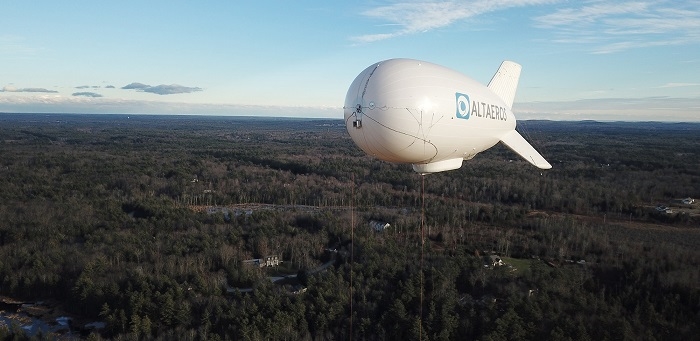
Communications infrastructure provider, Altaeros, has launched world's first commercially available aerial cell tower. Altaeros successfully completed initial testing of the SuperTower ST200 at its R&D Center in southern New Hampshire.
The SuperTower uses a proven aerostat platform, combined with innovative automation and control software, to deploy radios and antennas four times higher than traditional cell towers allowing carriers to efficiently cover substantially more area than traditional towers. It was tested with six high capacity Ericsson 4G LTE radios and three high-gain Matsing lens antennas. During initial testing users were able to stream high-definition video at distances well beyond the reach of a typical cell site, even in the hills and forests of New England. Altaeros is initially deploying SuperTowers in partnership with carriers in the US, with plans to quickly expand internationally.
Historically, service providers have struggled to offer coverage in rural areas due to the high cost of building large networks of remote towers in areas with few subscribers. In its 2018 Broadband Deployment Report, the FCC reported that over 24 million Americans still lack broadband internet, and huge swaths of rural America remain unserved or underserved.
The launch of the first commercial SuperTower marks a turning point for modern, high-speed connectivity in traditionally under-served rural communities. By reducing the number of sites needed in rural markets by over 90%, it offers a quick and inexpensive path to expand service. It can also accelerate the rollout of new technologies such as 5G and IoT in rural markets.
The ST200 is the culmination of over 8 years of aerostat research and development by Altaeros. Designed to work with many different telecom systems from any number of vendors, it is Altaeros' largest and most capable autonomous aerostat platform to date, and the first to be made commercially available. Building upon prior versions, proprietary automation and control software keep the aerial cell tower in place in changing weather and environmental conditions and ensures a stable platform for the telecommunication equipment. Multiple tethers connect the aerostat to the ground and transmit power and data to the airborne equipment, which is key to providing significantly greater capacity than other aerial communication systems.